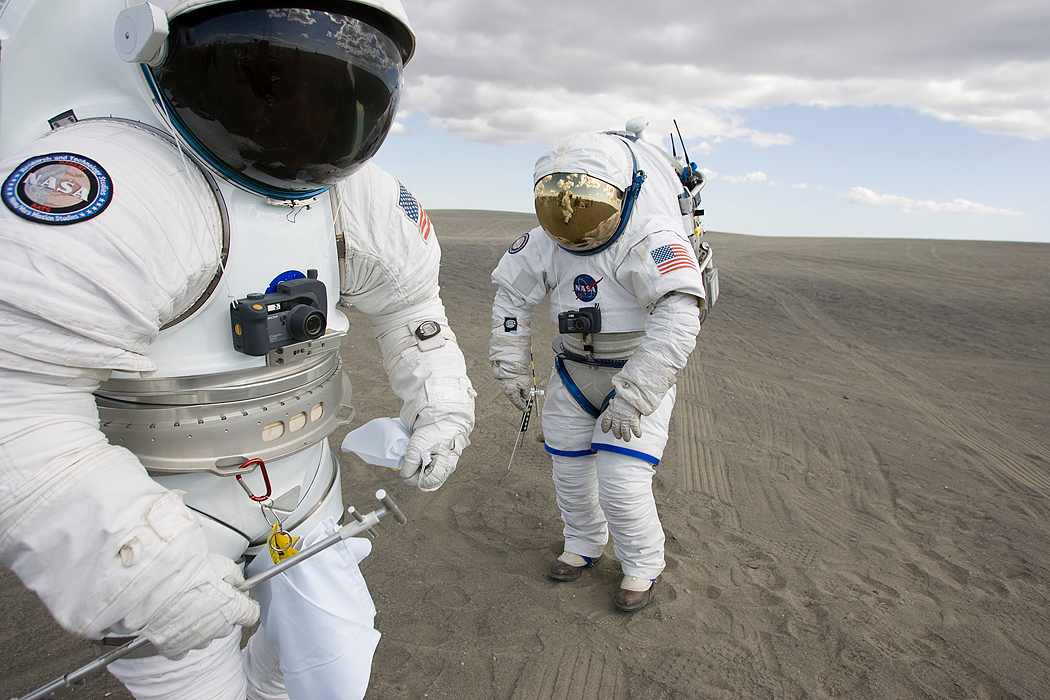The astronaut helmet protects its wearer from micrometeoroids, solar ultraviolet as well as infrared radiation. It is made up of the protective shell, neck ring, vent pad and feed port. Protection from radiation is actually provided by the Extravehicular Visor Assembly, which is fitted over the helmet.
A typical astronaut helmet like those worn in the Apollo missions is made of highly strengthened polycarbonate. Polycarbonate is a high impact-resistant plastic that you can also find in bulletproof glass and exterior automotive parts.
The neck ring mentioned above is a vital component in the pressure sealing feature of the astronaut’s outfit and attaches the helmet to the suit. The vent pad, which is fastened to the rear, has a recess that provides ventilation flow related functions. The feed port, on the other hand, supports the water and feed probes as well as the purge valve.
Today’s helmets have a built-in cam which allow us to see what they’re doing up there.
Both the helmet and suit provide protection from the dangerously low pressure of outer space. Without them, internal pressure in the astronaut’s body will push blood vessels and tissue outward.
Contrary to what Hollywood has portrayed in sci-fi films like Arnold Schwarzenegger’s Total Recall wherein bodies blow up when exposed to the vacuum of space, the effects are less sensational though. Nevertheless, full exposure to vacuum can still be harmful – lung damage being one of the side effects.
A lot of inconveniences accompany the wearing of an astronaut helmet. For example, you can’t just take it off to scratch a simple itch on your nose. To remedy this, a velcro patch is stuck on the inside to serve as a scratcher.
Also, since the helmet is fastened to the suit, astronauts who forget this end up facing its inner walls when they turn their heads. This can be quite annoying when they’d have to see panel switches above or at the sides from where they’re initially facing.
The problem gets even more complicated when they’re sitting. Since they’re strapped on their seats, astronauts can’t just lean back to face upward. If they want to turn their heads, they’d have to grab the helmet so they can make it turn to the desired direction.
Want to know what the most inconvenient predicament is? Space sickness or Space Adaptation Sickness (SAS) can strike even the most seasoned pilots, so imagine yourself as an astronaut having to puke right in the middle of a spacewalk. Still want to be the next Buzz Aldrin?
You can read more about astronaut helmet here in Universe Today. Here are the links:
There’s more about it at NASA. Here are a couple of sources there:
Here are two episodes at Astronomy Cast that you might want to check out as well:
Source: NASA

